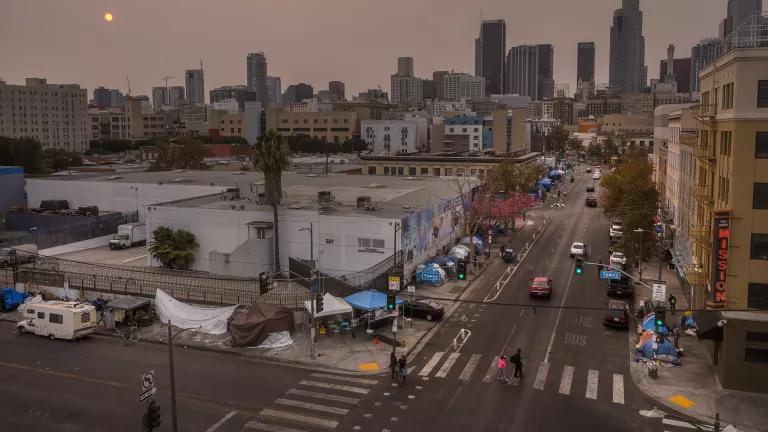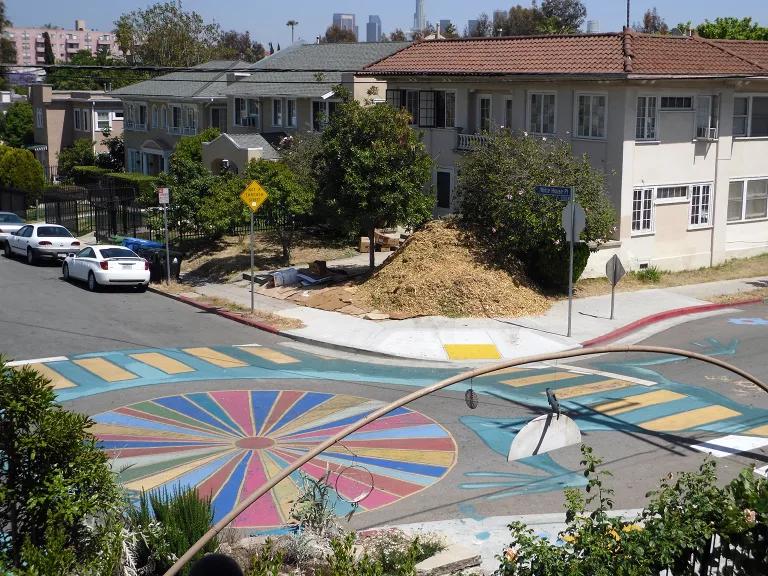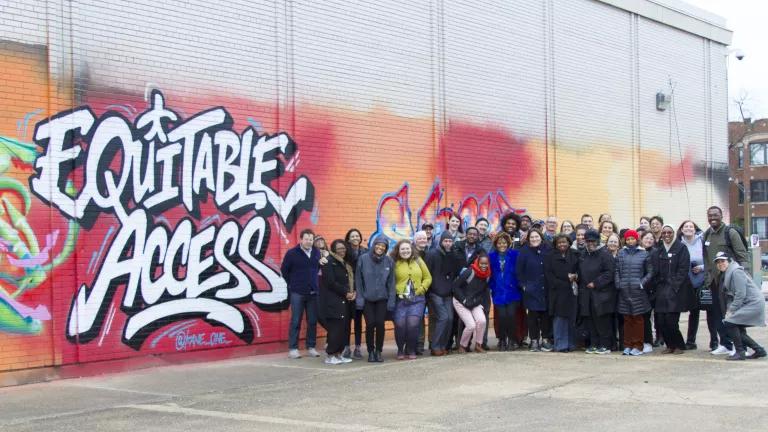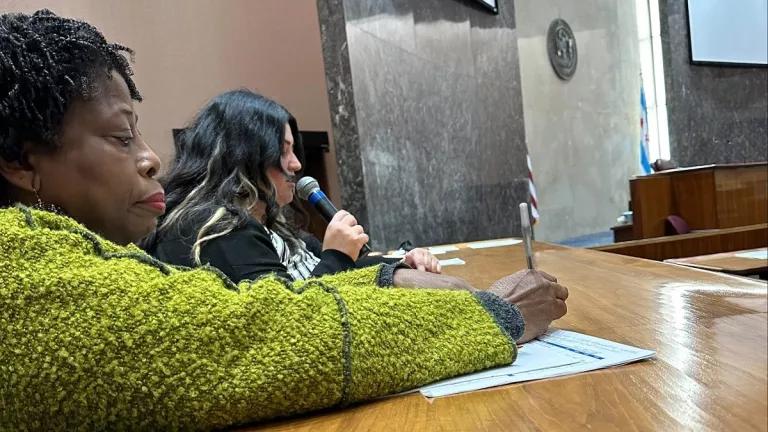Social Housing: Los Angeles’s Chance to Fight the Housing Crisis
The climate crisis exacerbates an already worsening housing crunch.

Skid Row in Los Angeles in September 2021
Allen J. Schaben/Los Angeles Times via Getty Images
The housing affordability crisis in the city of Los Angeles is hitting low-income communities the hardest as many neighborhoods are rapidly being gentrified. For the thousands of unhoused Angelenos and the growing number of residents facing housing instability, fighting to gain or keep a roof over their heads is only getting worse. But this problem is not unsolvable. To provide economic opportunity for low-income and historically disinvested communities, we need to move away from corporate-controlled rental housing and instead provide alternative affordable housing options that stay affordable forever; otherwise, housing will continue to be a struggle for everyone except the wealthy.
In addition to the housing crisis, the impacts of climate change (such as extreme heat, hurricanes, floods, and wildfires) are disproportionately affecting and devastating communities of color. My colleague Esther Portillo eloquently writes, “The housing and climate crises call on all of us, especially our leaders, to act and address social and racial inequality where life begins—in the home.”
A growing movement toward social housing
Social housing is a proven housing model that can be found in neighborhoods and cities across the globe, including Seattle, Toronto, Vienna, Montevideo, Uruguay, and Singapore. Social housing takes housing out of the speculative real estate marketplace, where the scarcity of affordable housing generates profits for existing property owners and corporate landlords—often to the detriment of low-income residents who face growing rent prices and are at risk of displacement and eviction. At its core, social housing is run by and directly in benefit to the communities that are living in those neighborhoods and is owned by a nonprofit, a cooperative, a community land trust, or some level of government. Social housing creates neighborhoods where residents have access to healthy, stable, and permanently affordable housing—and a voice in how their housing is managed.
The crux of social housing is that it is long-term, affordable housing that does not involve corporate interests. In fact, those who live in social housing have a guaranteed say in running their housing. No asking your slum landlord if you can have plants; you would instead decide together as neighbors where the plants would go.

Los Angeles Eco-Village co-op
Expanding the vision: Developing sustainable social housing
An example of social housing in Los Angeles is the cooperative Los Angeles Eco-Village. The Eco-Village provides stable, rent-controlled housing of 45 units, whose residents collectively maintain and manage the ecological, financial, and social health of their building. These residents aim to raise “the quality of community life while lowering…environmental impacts and expanding public awareness about more sustainable urban living.”
Affordable housing providers, such as community land trusts (CLTs), can work in partnership with developers and community-based organizations (CBOs) to acquire, build, and retrofit social housing like the Eco-Village. Allied groups, like the Los Angeles Neighborhood Land Trust (LANLT), work together in partnership with CLTs, CBOs, and developers on the joint development of a building plan to ensure the incorporation of green space into social housing.
The LANLT’s focus is to create parks and open spaces to contribute to the equity and well-being of L.A. neighborhoods. With community members actively participating in the park design process, the LANLT operates several parks and community gardens, with the designs built around climate resilience and being always community-centered.
Program Director Anna Gruben and Project Manager Bz Zhang note that “it is not always intuitive for [environmental planners] and affordable housing developers to work together.” Social housing development provides an opportunity to change that—we can combine open green space development and affordable housing development.
But there is more to be done to support cooperatives and other affordable housing providers in incorporating green spaces and retrofitting buildings to be more sustainable. NRDC is spearheading a collaboration with Arup to conduct case studies in Los Angeles to identify the gaps and roadblocks faced by affordable housers who are attempting ambitious energy retrofits. The study will help to identify ways that allies may advocate for innovative policies and programs to make decarbonization more accessible to the affordable housing market.
Los Angeles’s opportunity
Measure ULA (House LA), the November 2022 measure passed by L.A. voters, unlocked hundreds of millions of dollars for social housing production through a 4 percent transfer tax on properties sold at more than $5 million and a 5.5 percent transfer tax on properties sold at more than $10 million. The new transfer tax will generate hundreds of millions of dollars a year to be used to acquire, rehabilitate, and build healthy, affordable homes for low-income and middle-class Angelenos.
Right now, the city of Los Angelese has available land and underutilized buildings that can and should be used for social housing. Advocates, such as the Alliance for Community Transit–Los Angeles (ACT-LA) and the United to House LA coalition, are engaged in ensuring the sites identified for social housing are healthy, transit-rich areas built throughout the city, including on former parking lots—turning car-based land plots into spaces that benefit whole neighborhoods.
NRDC is actively engaged in ACT-LA’s social housing campaign. To get involved, join ACT-LA and urge L.A. city leaders to prioritize Measure ULA funding for social housing; it is our opportunity to shift the paradigm for how future generations see stable housing in Los Angeles. Through this model, we can show that even non-wealthy residents can afford a home for good and lay down roots in a community.




